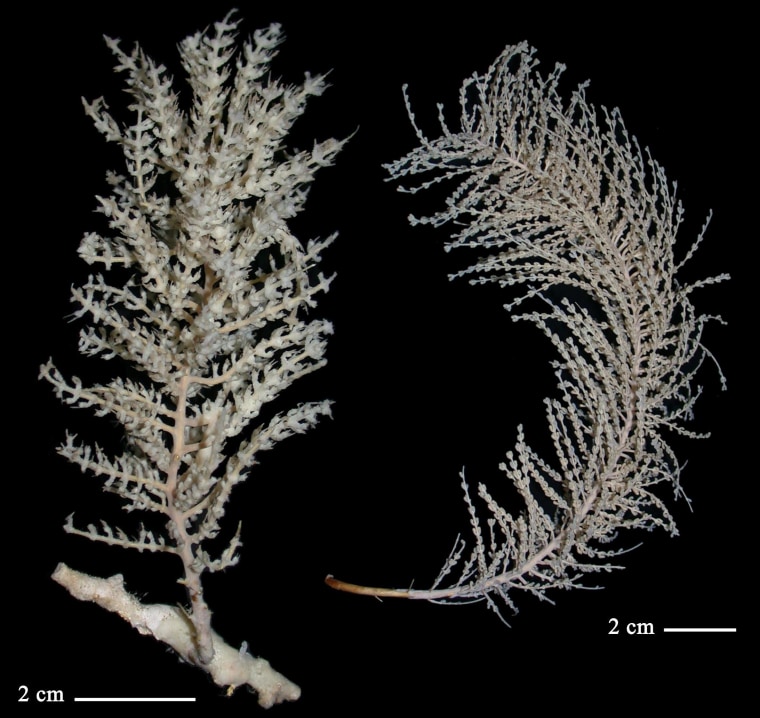Six new Antarctic animals that look more like flora than fauna have just been described in the journals Polar Biology and Scientia Marina.
These marine invertebrates were discovered during expeditions carried out over the past two decades. Two of the new species were found in the Eastern Weddell Sea in the Antarctic region.
The new species are all gorgonians, also known as sea whips or sea fans. Different types of these unusual organisms are found throughout the oceans of the world, especially in the tropics, making the latest Antarctic finds all the more unusual.
Like an animal known as the sea pen, individual tiny polyps form colonies that are normally erect, flattened, branching, and reminiscent of a fan. Others may be whiplike or bushy. A colony can be several feet high and across, but only a few inches thick. They may be brightly colored, often purple, red or yellow. Photosynthetic gorgonians can be successfully kept in captive reef aquariums.
Two of the new species were named Tauroprimnoa austasensis and Digitogorgia kuekenthali. (Think Taurus, the bull, for the first one.) Both are small and elongated.
"The Tauroprimnoa are characterized by being colonies in the shape of a brush, with simple branches and whose polyps arranged in whorls, have only four marginal scales. The rest of the polyp is covered by five longitudinal rows of scales. The sight is reminiscent of a bull, hence the name," said University of Seville researcher Rebeca Zapata-Guardiola, who led the study.
Four other species were discovered in the Antarctic's Atka Bay, near the South Georgia islands. These new organisms were named: Thouarella bayeri, Thouarella sardana, Thouarella undulata, and Thouarella andeep. They all have eight rows of scales that cover the surface of the polyps.
"The differences are found in the ramification pattern of the colonies, in the layout of the polyps in the branches and in the shape and ornamentation of the scales of the polyp," Zapata-Guardiola said.
In addition to increasing the known size of the animal kingdom, the new species add to our understanding of what limits life on Earth.
Scientists are always examining life at the poles, in hopes of figuring out what might be able to survive under extreme conditions, such as very cold spots with few apparent food sources. This information is then often examined by space experts who theorize about the possibility of life on other planets where conditions might be similar to these more remote earthly places.
